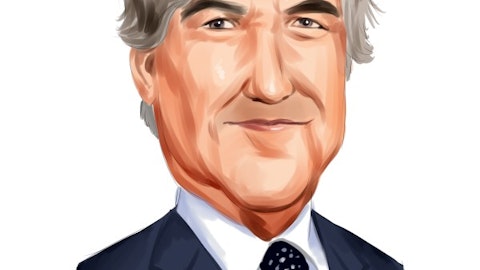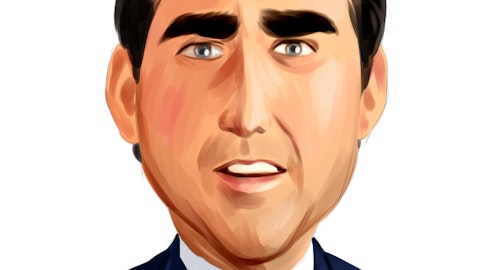Rich Schlenker: So maybe I’ll start off and respond to that quantitatively. And I think Catherine may want to add in qualitatively about why we’re confident in this. But look, I think we are overall to believe that where we need to be is obviously, the pull in the market needs to be there that we are confident we can achieve over a long term. But we think that is going to come with growing that head count in that 6% to 8% range. And at times, hopefully, even striking above that. We do think that pricing will vary over time on the realized rate that we get out of that. The realized rate has a lot to do with turnover and hiring rates and things of that type. But we are — will that always cover up near the 4%? No, I think it could be 2.5% to 3.5% would probably be a long term normalized realization range.
But I think we can be slightly above that or at the higher end of those ranges this year, and that’s why we provided that guidance around the 3% to 4%. And then in the utilization area, this year we have the utilization flat to down but I think over the long term, we view that, that utilization is actually gradually growing. You’re going to have years of some fluctuation on that. But as I stated, we think that the overall utilization where it might be approximately 73% this year, give or take, over time that, that’s going to move to the mid-70s and be sustained in that range. So that’s going to be even to a plus over a year period of time that we can hopefully achieve there. So overall, that’s why we believe that it is something that we can get up performing around that high single to low double digit mark and hopefully performing on the upper end of that.
Catherine Corrigan: And just to add on to that, Andrew, from the standpoint of the marketplace, right? We’ve got to have, of course, the work for all of those folks to do, and that comes across many different sectors of the economy in terms of opportunity, right? It’s industries and transformation that can create tremendous opportunity for us. Innovation creates opportunity. I mean if you think about the macro trends like the energy transition that we are facing, this is going to drive engineering expectations to the limit. This is a place where Exponent thrives in understanding the behavior of these innovations across the product life cycle, whether that’s proactive or whether that’s reactive. You think about life sciences, things like digital health, the emphasis on value demonstration with medicines and therapies.
It’s our job — you think about automated vehicles and electrification, the complexity associated with those innovations is going to continue to drive work to Exponent. Our job is to understand what’s coming around the bend, position ourselves with the talent, with the capabilities and with the relationships to win the business. But I think the opportunity landscape absolutely supports the model that Rich is talking about over time in the sort of high single to low double digit range.
Andrew Nicholas: And then maybe just for my follow-up. You touched on it a couple of times, Catherine, on kind of digital health pharma space. I know it’s a major growth focus for you and the organization as a whole. You’ve done a lot of hiring there over the past couple of years. Can you just give a little bit more of a detailed update on how that’s going? I think it’s only a couple of points as a percentage of revenue today, but you have ambitions for that to be much larger as a percentage of your revenue base. So I was just wondering if you could give a more detailed update on that effort?
Catherine Corrigan: We continue to invest, as you mentioned, on the talent side, but also in the building of the client relationships, getting those relationships established so that we can be able to get those engagements started when the issues arise, and we are absolutely getting increased traction around that area. We have some public work that we’re doing for the Center for Disease Control around data and COVID vaccine efficacy and safety. And so there are some very tangible and very forward-looking kinds of projects that we have won in that space. So you’re right. It is still a relatively small percentage of the portfolio, but I’m pleased with the progress. Look, this is a long term opportunity and we are in the investment phase but we are seeing some of those early returns in terms of those performance indicators. So very pleased to see that and we’ll continue to report back on that.
Operator: Ladies and gentlemen, this concludes the question-and-answer session as well as today’s presentation. Thank you all for your participation. You may now disconnect your lines.
Follow Exponent Inc (NASDAQ:EXPO)
Follow Exponent Inc (NASDAQ:EXPO)
Receive real-time insider trading and news alerts





